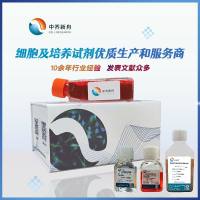One of the easiest and most sensitive methods to screen for, to quantify, and to determine the quality of antibodies in the serum of mice, the spleens of which may be used for fusions, is by solid-phase enzyme-linked immunoassays (EIA) (1 ,2 ). In these procedures, the wells of 96-well plates or strip plates are coated with antigen. Antibody that binds to the antigen is detected by its reaction with an anti-immunoglobulin that has been conjugated to a reporter molecule, usually horseradish peroxidase (HRP). Quantification of antibody is accomplished through diluting sera to “extinction” levels of detection. The quality of antibody binding to antigen is determined by using conjugated antibodies, specific for isotypes rather than an anti-immunoglobulin. The procedures work equally well for detecting monoclonal antibodies (MAbs) present in tissue-culture medium from primary cultures of hybridomas, cloned hybridomas, and antibodies in immune ascites. In the latter situations, the option exists to use polyclonal or isotype-specific anti-immunoglobulin reagents conjugated to enzyme. The choice of second step reagent used depends on whether the detection system is intended to detect antibodies of a single or all immunoglobulin isotypes. A 96-well plate configuration for EIA is presented here as an example.






